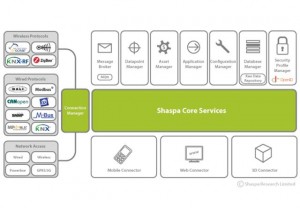There was a splash when my suitcase fell into the puddle next to the taxi outside the Exeter St. David's rail station last night. Although it was sunny under blue skies for both the days in London, while I was indoors attending the Open IoT Assembly, I was expecting rain in England and came prepared, I thought; it was the force of gravity that I had underestimated and caught me (and my suitcase) by surprise.
"More rain" announced the lonely receptionist at the White Hart hotel when I inquired about today's forecast. Instead the sky could not be bluer or clearer of clouds. Is the unpredictability of the weather an omen for the day? At least I won't be traveling with wet belongings on my way to the UK Met Office for the open session of the OGC meeting and back to the rail station this afternoon.
I'm attending the meeting only for a few hours so that I can conduct in person meetings with the chairs and conveners of the IndoorGML Standards Working Group, the Sensors 4 IoT Standards Working group and other luminaries in the geospatial realm. I find it highly appropriate that the sensors I've used for weather have been so highly inaccurate today! I trust that my internal confidence about my meetings will serve me better today than they did last night.

